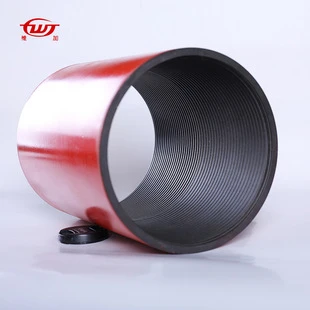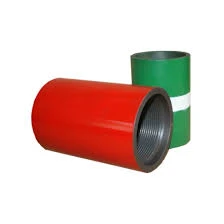- Afrikaans
- Albanian
- Amharic
- Arabic
- Armenian
- Azerbaijani
- Basque
- Belarusian
- Bengali
- Bosnian
- Bulgarian
- Catalan
- Cebuano
- Corsican
- Croatian
- Czech
- Danish
- Dutch
- English
- Esperanto
- Estonian
- Finnish
- French
- Frisian
- Galician
- Georgian
- German
- Greek
- Gujarati
- Haitian Creole
- hausa
- hawaiian
- Hebrew
- Hindi
- Miao
- Hungarian
- Icelandic
- igbo
- Indonesian
- irish
- Italian
- Japanese
- Javanese
- Kannada
- kazakh
- Khmer
- Rwandese
- Korean
- Kurdish
- Kyrgyz
- Lao
- Latin
- Latvian
- Lithuanian
- Luxembourgish
- Macedonian
- Malgashi
- Malay
- Malayalam
- Maltese
- Maori
- Marathi
- Mongolian
- Myanmar
- Nepali
- Norwegian
- Norwegian
- Occitan
- Pashto
- Persian
- Polish
- Portuguese
- Punjabi
- Romanian
- Russian
- Samoan
- Scottish Gaelic
- Serbian
- Sesotho
- Shona
- Sindhi
- Sinhala
- Slovak
- Slovenian
- Somali
- Spanish
- Sundanese
- Swahili
- Swedish
- Tagalog
- Tajik
- Tamil
- Tatar
- Telugu
- Thai
- Turkish
- Turkmen
- Ukrainian
- Urdu
- Uighur
- Uzbek
- Vietnamese
- Welsh
- Bantu
- Yiddish
- Yoruba
- Zulu
Jan . 22, 2025 05:03
Back to list
Caing Coupling
In the evolving landscape of oil and gas exploration, the components used in drilling operations play an integral role in determining the efficacy and safety of the process. One quintessential component is the finished casing coupling, a tool that stands as both a protector and a facilitator in the drilling systems. Here, we delve deep into the world of finished casing couplings, exploring their significance, features, and the expertise required in their fabrication and application.
Field experience further underscores the value of high-quality finished casing couplings. In the oil fields, every component must perform flawlessly; failures can lead to catastrophic outcomes such as blowouts or environmental disasters. Operators with extensive experience know the importance of using reliable components, and the role finished casing couplings play in avoiding unnecessary downtime and ensuring consistent production. Moreover, innovations in coupling design reflect a deeper understanding of downhole dynamics and the challenges faced by drilling engineers. Recent advancements include the development of premium threading profiles that reduce the risk of galling (seizing and tearing) and enhance sealing capabilities, thus providing additional security against leaks and other malfunctions. Such innovations not only improve operational safety but also optimize the economic efficiency of drilling activities by reducing maintenance needs and prolonging equipment lifespans. Trust in finished casing couplings is ultimately built through consistent performance, adherence to industry standards, and verifiable testing and certification. Producers who prioritize transparency in their manufacturing processes and maintain stringent internal and external quality checks establish a foundation of trust with their clients. This trust is crucial as it allows oil and gas companies to operate with confidence, knowing that their infrastructure is supported by components designed to meet the highest standards. In conclusion, finished casing couplings are much more than mere connectors; they are vital components engineered with precision, expertise, and a deep understanding of their critical role in well integrity. The commitment to quality from manufacturers, combined with continuous innovation and adherence to industry standards, solidifies their standing as trustworthy components in the complex machinery of oil extraction. Such a focus on experience, authority, and reliability transforms these couplings into indispensable elements that underpin the success of drilling operations worldwide.


Field experience further underscores the value of high-quality finished casing couplings. In the oil fields, every component must perform flawlessly; failures can lead to catastrophic outcomes such as blowouts or environmental disasters. Operators with extensive experience know the importance of using reliable components, and the role finished casing couplings play in avoiding unnecessary downtime and ensuring consistent production. Moreover, innovations in coupling design reflect a deeper understanding of downhole dynamics and the challenges faced by drilling engineers. Recent advancements include the development of premium threading profiles that reduce the risk of galling (seizing and tearing) and enhance sealing capabilities, thus providing additional security against leaks and other malfunctions. Such innovations not only improve operational safety but also optimize the economic efficiency of drilling activities by reducing maintenance needs and prolonging equipment lifespans. Trust in finished casing couplings is ultimately built through consistent performance, adherence to industry standards, and verifiable testing and certification. Producers who prioritize transparency in their manufacturing processes and maintain stringent internal and external quality checks establish a foundation of trust with their clients. This trust is crucial as it allows oil and gas companies to operate with confidence, knowing that their infrastructure is supported by components designed to meet the highest standards. In conclusion, finished casing couplings are much more than mere connectors; they are vital components engineered with precision, expertise, and a deep understanding of their critical role in well integrity. The commitment to quality from manufacturers, combined with continuous innovation and adherence to industry standards, solidifies their standing as trustworthy components in the complex machinery of oil extraction. Such a focus on experience, authority, and reliability transforms these couplings into indispensable elements that underpin the success of drilling operations worldwide.
Next:
Latest news
-
Tubing Pup Joints: Essential Components for Oil and Gas OperationsNewsJul.10,2025
-
Pup Joints: Essential Components for Reliable Drilling OperationsNewsJul.10,2025
-
Pipe Couplings: Connecting Your World EfficientlyNewsJul.10,2025
-
Mastering Oilfield Operations with Quality Tubing and CasingNewsJul.10,2025
-
High-Quality Casing Couplings for Every NeedNewsJul.10,2025
-
Boost Your Drilling Efficiency with Premium Crossover Tools & Seating NipplesNewsJul.10,2025
Related Products







